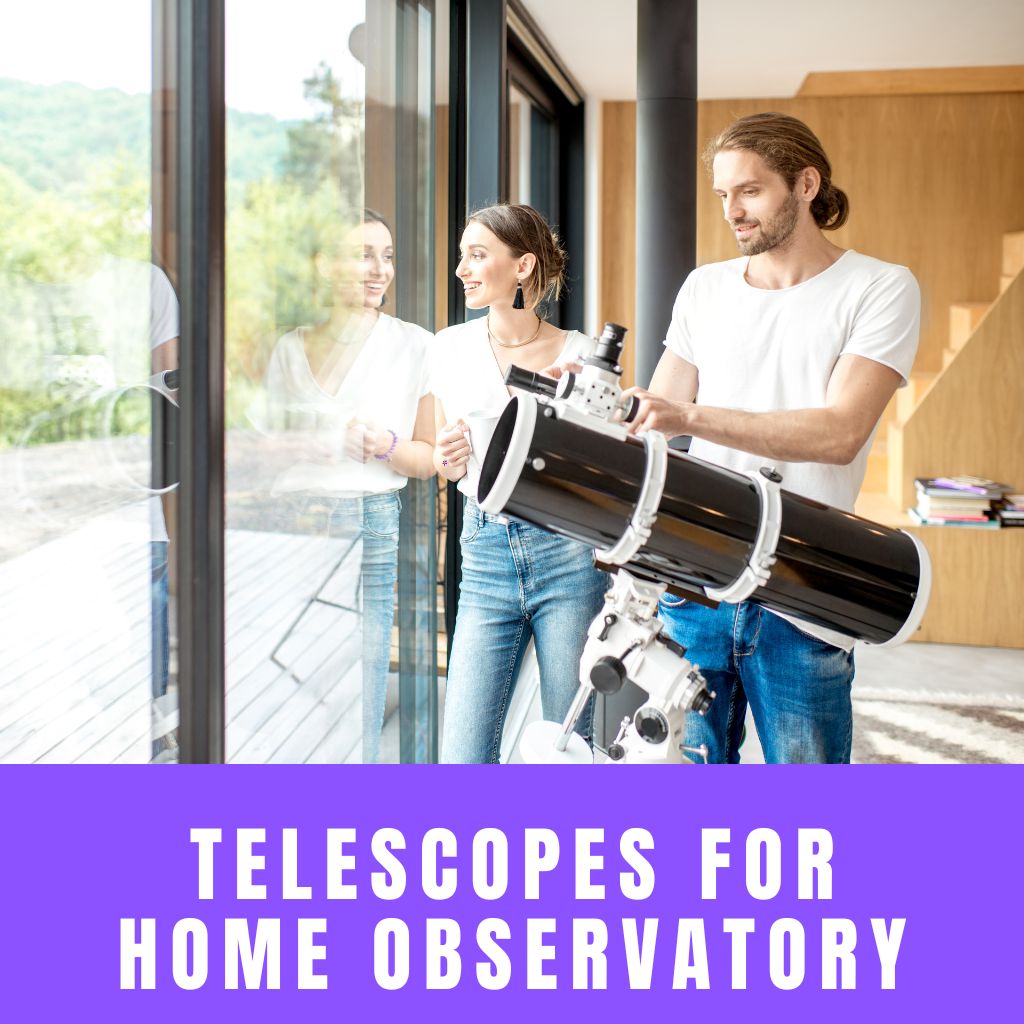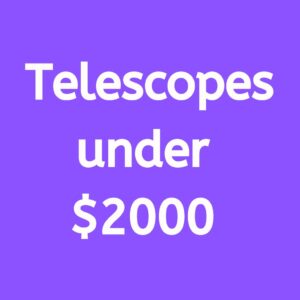This site contains affiliate links to products. I may receive a commission for purchases made through these links.
Stargazing from the comfort of your own backyard can be a rewarding experience. But if you’re serious about astronomy, you’ll need more than just a blanket and a clear night. That’s where a home observatory comes in.
Choosing the right telescope for your home observatory can be a daunting task. With so many options available, it’s easy to feel overwhelmed. But don’t worry, I’ve got you covered.
In this guide, I’ll walk you through the key factors to consider when buying a telescope for your home observatory. I’ll help you understand the basics, and I’ll give you the lowdown on some of the best telescopes in the market today. So, let’s get started and turn your backyard into a window to the cosmos.
Understanding Your Needs
To begin with, it’s essential to wrap your head around what your specific needs are when it comes to choosing a telescope for your home observatory.
One major factor to mull over is the type of celestial objects you’re keen on observing. You might be an astronomy enthusiast who drools over glorious galaxies and nebulae, or perhaps it’s the celestial bodies within our solar system that keep you up at night. For instance, telescopes with high optical quality are best suited for observing planets, while those with larger aperture sizes are great for viewing faint objects like distant galaxies and nebulae.
You might think, ‘Why can’t I have a telescope that’s perfect for observing everything?’. Well, that’s where things get a tad complex. The features that make a telescope adept at viewing one kind of celestial object might make it less than ideal for viewing others. It’s fundamentally about striking a balance.
Another detail to consider is the size and portability of the telescope. If you’re the type who enjoys carrying their gear to different places to avoid light pollution, you’ll definitely need a telescope that’s both robust and transportable.
Don’t forget about your budget too. It’s essential to get a clear picture of how much you’re willing to spend. Telescopes can range from a few hundred to several thousand dollars. Honestly, you don’t need to break the bank to gaze at the stars. There’s a bevy of affordable options out there that can satisfy both hobbyists and serious observers.
Last, consider your level of experience. Different telescopes have different ease-of-use. For beginners, a simpler telescope that’s easy to set up and requires minimal maintenance could be a wiser choice. More so, many modern scopes come with computer-aided guidance which can be a boon for those still getting to grips with stargazing.
Let’s now dig deeper into some of these factors in the next sections and zero in on the best telescopes for a home observatory.
Telescope Types and designs
There’s a wide range of telescopes available out there but they can be loosely grouped into three main types: Refractors, Reflectors, and Catadioptrics. Let me unpack these a little bit for better comprehension, so get ready, lens talk is about to get real.
Refractor telescopes utilize a convex lens, like the ones found in eyeglasses, to magnify distant images. They are quite popular due to their simplicity, sturdiness, and the clarity of images that they provide. Ah, isn’t it wonderful how bending light can take you starward?
Little known fact: The famous astronomer, Galileo Galilei, did his astronomical observations using a refractor! However, this model can get hefty and costly if you’re gunning for the larger lenses. So be warned.
Next up are the Reflector types. They make use of mirrors instead of lenses. Imagined a tricked-out version of your bathroom mirror that can pivot to capture light from various angles. Yes, that’s a reflector for you. Sounds cool, right? They’re typically more affordable and provide more detail per inch of aperture compared to refractors. However, these need more frequent adjustments and cleaning. Ain’t nothing comes without a price!
Last, but definitely not least, the Catadioptric telescopes are a combo deal. They incorporate both lenses and mirrors to direct light, giving you the best of both worlds. The enchanting celestial bodies you’ve been dying to observe are now at your fingertips! If it’s within your budget, this could very well be your best pick. They’re compact, versatile and excellent for viewing faint, far-off objects.
These are just some of the basics of telescope types and designs. Stick with me as we delve deeper into understanding which types pair best with your specific needs in the next segments.
Aperture and Magnification
One of the key components to consider when buying a telescope is its aperture size. The aperture is the diameter of the telescope’s lens or mirror and it directly affects the telescope’s ability to gather light. The larger the aperture, the more light it can gather, leading to sharper, more detailed images.
Often, people believe that magnification is the key factor when choosing a telescope. But here’s a golden rule to remember: the quality of a telescope is not defined by its magnifying power but by the diameter of its aperture. Yes, magnification plays a role in viewing celestial objects, but the detail and clarity of the image significantly rely on the aperture size.
Magnification can actually be changed by using different eyepieces, but the aperture size remains constant. This means you can increase the magnification, but if your aperture is small, the image will lack clarity and detail.
Below is a markdown table showing the ideal aperture size depending on viewing conditions:
| Viewing Conditions | Ideal Aperture Size |
|---|---|
| City Sky with Light Pollution | 3 to 5 inches |
| Suburban Sky with Moderate Light Pollution | 5 to 8 inches |
| Dark Rural Sky with Minimal Light Pollution | 8 inches or larger |
Now let’s dive deeper into choosing the best telescope type depending on your requirements. We’ll discuss various practical considerations, from price to portability to the effort required in maintenance. Every one of these factors could play a significant role in identifying the perfect choice for your stargazing endeavours.
Mounts and Tracking Systems
Now let’s move onto a different yet crucial aspect of telescopes: mounts and tracking systems. A telescope’s mounting system plays a pivotal role in the overall observing experience. After all, it’s the mount that holds your scope steady and allows you to aim it accurately at celestial objects.
There are two main types of mounts for home observatories: altazimuth and equatorial. Altazimuth mounts, the simpler of the two, move side-to-side (azimuth) and up-and-down (altitude). They’re perfect if you’re starting out or if you want something easy to operate.
Equatorial mounts, on the other hand, are aligned with Earth’s axis and track the sky’s movement. These mounts are more complex, but they allow for smoother tracking of celestial objects across the sky – a feature particularly beneficial for long exposure astro-imaging.
Pairing the right tracking system with a mount is equally crucial. Manual tracking systems allow you to move the telescope yourself, while motorized systems can track celestial objects automatically. For beginners, manual tracking systems are a cost-effective option that offer hands-on experience. Motorized systems, despite being pricier, are a boon for seasoned observers interested in astrophotography, as they provide improved accuracy in tracking stars and other celestial bodies.
| Mount Type | Tracking System | Pros | Cons |
|---|---|---|---|
| Altazimuth | Manual | Simple operation, cost-effective | Requires continuous adjustment |
| Altazimuth | Motorized | Automated tracking | Complex and pricier |
| Equatorial | Manual | Precise tracking, great for learning | Requires practice |
| Equatorial | Motorized | Professional-level tracking, ideal for astrophotography | Most expensive, steep learning curve |
We’ve now uncovered the basics of telescope mounts and tracking systems. In the next section, we’ll be delving into factors that can affect telescope performance, such as viewing location and weather conditions.
Optical Coatings and Quality
Continuing our exploration into the world of home observatories, it’s now time to talk about a significant topic: optical coatings. Optical coatings play a vital part in your telescope’s performance. They can dramatically enhance the light-gathering abilities, ultimately bringing out more detail in the images.
But what are these optical coatings, and why do I think they’re so crucial? Optical coatings are thin layers of substances put on the telescope lenses and mirrors. They are meant to reduce light loss and glare, while enhancing light transmission and image contrast. Essentially, they make your telescope more efficient and result in clearer, brighter images.
When choosing a telescope, make sure to look for those with multi-coated or fully multi-coated optics. I cannot overemphasize the importance of this feature. These types of coatings applied to all lens and mirror surfaces can minimize light distortion and maximize light transmission. If you want the best performance, don’t settle for less!
Still, optical coatings aren’t the only factor in determining image quality. The build quality of your telescope’s optics also counts. A well-built telescope, even without the highest level specs, can give you excellent performance. So, don’t ignore the optics’ quality while focusing too much on the coatings.
Here are the key takeaways:
- Optical coatings reduce light loss and increase image contrast.
- Multi-coated or fully multi-coated optics are what you should look for.
- The build quality of the optics matters too.
Best Telescopes for Home Observatories
Understanding the role of optical coatings is key when deciding upon the best telescope for your home observatory. While the importance of multi-coated or fully multi-coated optics is already explained, that’s far from the only aspect to consider. Let’s delve deeper into some of the top telescopes in the market.
Celestron NexStar 8 SE Telescope is among the top contenders. It’s renowned for its advanced features like SkyAlign and a database of over 40,000 celestial objects. This telescope takes advantage of its high-end, multi-coated glass optics for superior light transmission.
One mustn’t overlook the Orion 09007 SpaceProbe 130ST Equatorial Reflector Telescope. It’s exceptional for its wide-field views, thanks to its short focal length. Additionally, its parabolic mirror flaunts a fully multi-coated surface, ensuring you don’t miss out on any heavenly sight.
SkyWatcher Evostar 120 APO Doublet Refractor Telescope, on the other hand, makes its mark with its apochromatic doublet refractor. It minimizes color dispersion and heightens contrast for crystal-clear images.
Making the right decision hinges on understanding these specifications and matching them with your requirements. Take a moment to assess what you value most in your celestial observations. Is it light transmission, wide-field views, or high contrast? Your answer will resolve which telescope is perfect for your home observatory.
Let’s break this down into a simple table for easy comparison:
| Telescope | Key Features | Type of Optics |
|---|---|---|
| Celestron NexStar 8 SE | SkyAlign, 40,000+ celestial objects database | Multi-coated |
| Orion 09007 SpaceProbe 130ST | Wide-field views | Fully multi-coated |
| SkyWatcher Evostar 120 APO | Apochromatic doublet refractor | Doublet Optics |
Setting up the perfect home observatory involves careful consideration of each potential telescope’s features. The excitement and joy of celestial exploration rest on the shoulders of your decision.
Conclusion
Choosing the right telescope for your home observatory isn’t a decision to take lightly. It’s all about understanding the specs and aligning them with your needs. The Celestron NexStar 8 SE, Orion 09007 SpaceProbe 130ST, and SkyWatcher Evostar 120 APO are all top contenders. Each offers unique features and optics that can enhance your stargazing experience.
Remember, the importance of optical coatings can’t be overstated. So, whether you’re a novice stargazer or a seasoned astronomer, the perfect telescope is out there. It’s just a matter of finding the one that best suits your home observatory. Happy stargazing!











